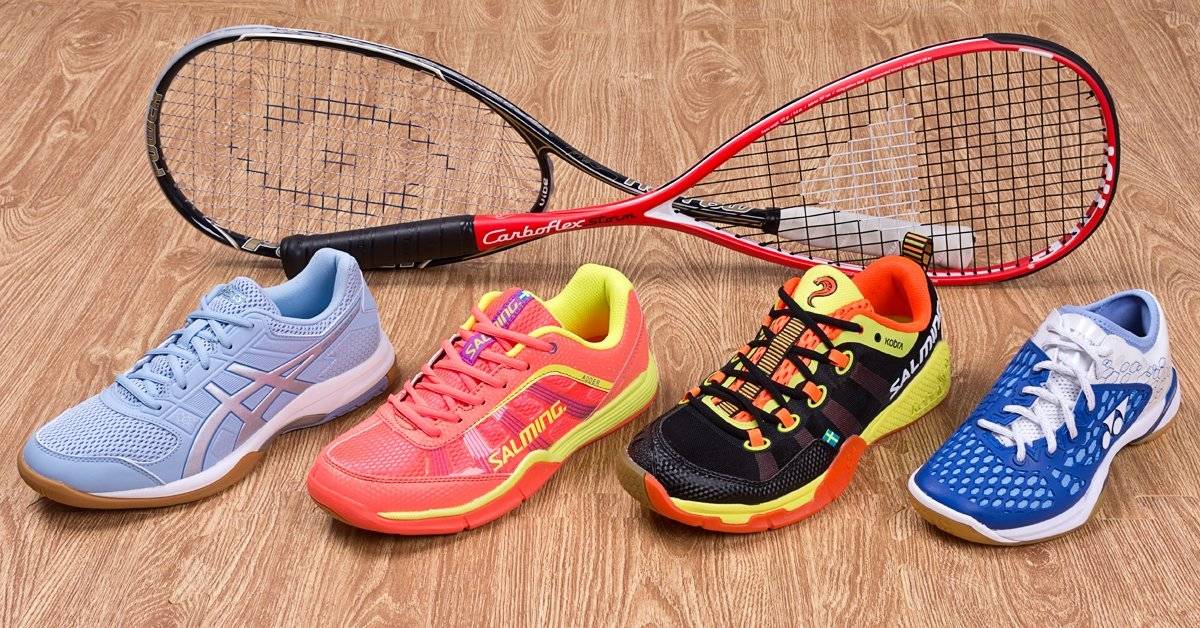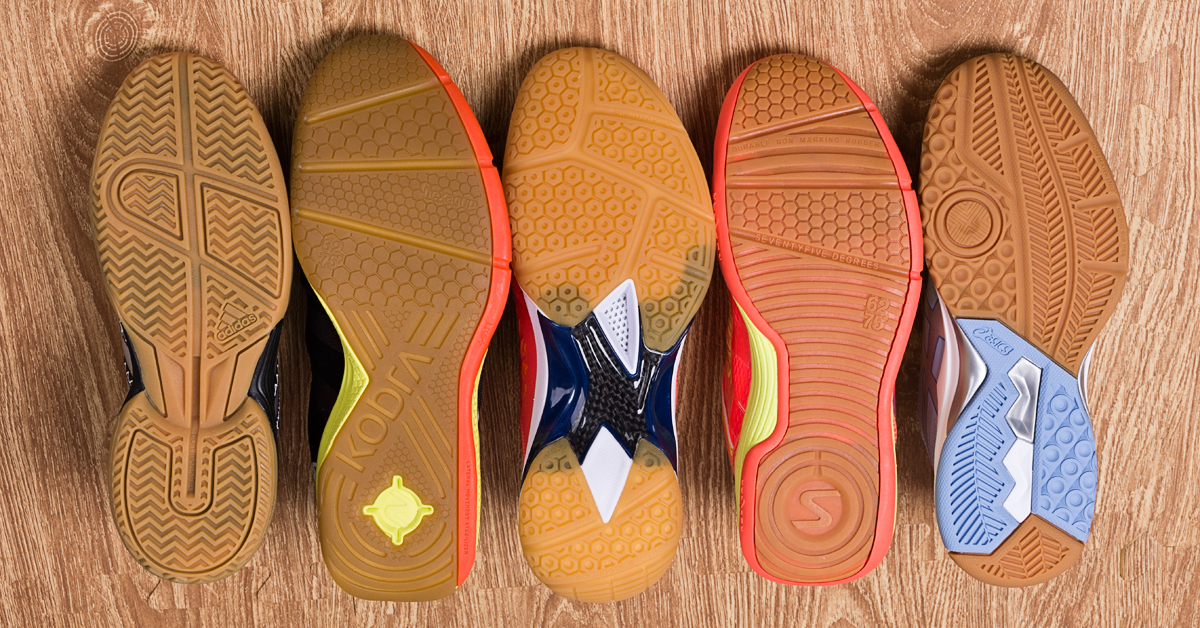Squash is a fast-moving game. You need to make quick changes: start, stop and turn on a dime. Finding the right squash shoes can not only help improve your game, it can keep you injury free.
Squash soles
I've never heard of a squash court allowing black soles. Even if there is one out there, this is not the norm. Therefore, I wouldn't even consider buying a pair of shoes with black soles. You want non-marking gum rubber. Even if a squash club or gym does not insist on this, it is good etiquette to never wear your squash shoes outdoors. Yes, this means that you should wear a different pair of shoes to and from the court. This isn't some crazy rigid squash rule. It's simply because when you wear shoes outside they get dirty. Dirty shoes make the courts dirty which makes them slippery which makes them dangerous.
How to find the perfect fit
It may seem like common sense to get a pair of shoes that fit correctly, but I'll say it anyway: Get a pair of squash shoes that fit correctly! Squash is a very intense game so the right fit is vital. Your feet will swell as you play. When you are trying on shoes, make sure they aren't tight. Even if you've been walking around the mall for a bit (from the parking lot to the front door doesn't really count) your feet will not be as swollen as when you actually play. Therefore, even shoes that are just a tad tight in the store may become very painful during a game. Squash games can be long. Playing with sore feet is uncomfortable and a lot less fun.
Make sure you have enough room in the toe bed -- pounding your toes into the top of your shoes can cause discomfort and you may eventually lose a toenail. Therefore, please make sure your toes aren't hitting the end of the toebox.
Since squash requires a lot of ankle movements, take a look at your ankles as well. Do you have larger ankles? A snug pair of squash shoes could cut off the blood flow to your foot, causing very serious problems. Do you have skinny ankles? Larger shoes may become loose and cause you to trip and fall. Make sure your shoes feel secure and stable. You should be able to move a bit from heel to toe, but not too much.
During a game of squash you need to stop, start and turn quickly. However, you don't want your shoes to turn too easily. You need good traction so you're not sliding all over the place. The right soles will really help with this.
When should you replace your squash shoes?
As a general rule of thumb, many players go by how many times they play in a week. For example, if you play twice a week, you'll probably want to replace your shoes twice a season; you play three times a week, think about replacing them three times a season and so on. However, if your feet start feeling sore or painful after a game, the inside of your shoes may be wearing. It's time for a new pair. Each player is different. I tend to wear out the outer edge of my shoes first so that's what I keep an eye on. I know lots of toe draggers. They know to watch this area of their shoes for wear.If this is your first time buying squash shoes, consider going to a specialty squash store to get personally fitted. It can save you tons of frustration, pain, and money. If you don't have a specialty store near you, look to many of the well-known, well-respected brands of squash shoes: adidas, ASICS, Babolat, HEAD, New Balance, Salming and Yonex (Please note, these brands are in alphabetical order, not order of recommendation.)
Shop all Squash Shoes at Holabird Sports!


